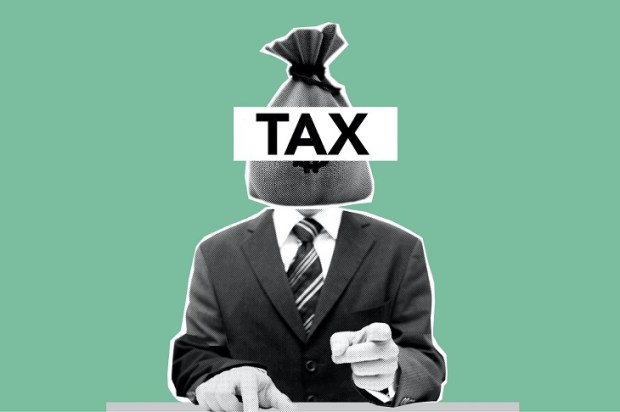The constant increase in taxes and cost of living pressures have been particularly hard on families, making it difficult for them to get by without both parents working full time and often overtime. The consequence has been a sharp reduction in the amount of time families spend together, and perhaps not surprisingly, also a decrease in the number of people choosing to start a family (Australia’s fertility rate has now dropped to 1.5 children per couple).
One reason is the lopsided way that our tax and welfare systems treat families. Our welfare system is based on the family unit, with couples receiving more than individuals and parents receiving more than the childless. In contrast, the Australian tax system is a relative outlier among developed countries by being focused solely on the individual regardless of their family situation. This should change.
We could learn from family tax policies around the world. America has joint tax filing for married couples and child tax credits, France has income splitting for both spouse and children, while Germany allows income splitting for couples and grants parents a higher tax-free threshold for each child. Hungary has gone a step further, and has announced that mothers with two or more children will be exempt from paying income tax for the rest of their lives!
Australia’s individual-based tax system causes different families to be treated differently depending on the division of labour within the family. Couples who both earn similar incomes are able to take advantage of two tax-free thresholds, while couples with one primarily income-earner can only make use of one tax-free threshold and therefore end up facing a relatively higher tax burden, even if their household income is the same in both situations.
Obviously, this can have a large impact on families with children, since many parents would prefer to spend at least some time with their children, especially during their early years.
For example, consider a simplified example with a tax-free threshold of $20k and a tax rate of 20 per cent above that threshold. A two-income family with total family income of $100k would effectively have a tax-free threshold of $40k ($20k for each working parent) and would pay 20 per cent on the remaining $60k, equating to $12k in annual tax. In contrast, a one-income family with the same total income would have a tax-free threshold of $20k and would pay 20 per cent on the remaining $80k, equating to $16k in annual tax. The one-income family faces a 33 per cent higher tax burden despite having the same family income, which effectively punishes parents who spend time raising their children.
This situation is easily resolved by richer families, who can arrange their finances through company or trust structures, which effectively ‘splits’ their income so that they can take advantage of the tax-free threshold twice. Unfortunately, this isn’t possible for most ordinary families, which makes the current system both biased against families and regressive.
A popular proposed solution is to allow all families to get the same tax benefits already available to wealthy families. This could be done either by allowing income splitting, or else by having a family-based tax system with combined tax thresholds. To continue with the above example, if we allowed income splitting for the single-income family earning $100k then they would now have an effective tax-free threshold of $40k, the same as a two-income family or a wealthy family using a trust/company structure.
This concept can be extended to cover children, with an additional tax benefit for each extra child. This could come in the form of a tax credit (as in America), tax deduction (as in Belgium), income splitting with the children (as in France), or an increase in the tax-free threshold for each child (as in Germany). We prefer the German model.
Australia currently has the ‘Family Tax Benefit’ (FTB). Despite the name, the FTB is not a tax benefit, but rather a welfare payment. Providing family welfare makes sense for families that don’t have a tax burden, but for tax-paying families our current system creates a large amount of tax-welfare churn where the same family is both paying tax and receiving welfare at the same time. This tax-welfare churn is not just wasteful, it also denies people financial independence and can cause high effective marginal tax rates.
The Australia system should be reformed in the following ways:
Family tax treatment – Married parents should have the option to file taxes jointly, with a combined tax-fee threshold of $50k, which would also apply to the Medicare Levy. This would provide an effective benefit of up to $6,424 per year under the current tax system.
Child tax exemption – An additional $10k tax-free threshold per child, providing an effective benefit of up to $3k per child. A family with two children would have an effective tax-free threshold of $70k before paying any income tax.
Childcare refundable tax credit – Replace the current Child Care Subsidy (CCS) with a refundable tax credit of $1,000 per month per child under school age. A family with two children under school age would have an effective tax-free threshold of $143k before paying net income tax.
Simplify family-based welfare – Family Tax Benefit should be replaced with a streamlined $6k welfare supplement per child, withdrawn at a consistent 30 per cent rate once the family is no longer eligible for regular welfare. This would move more families off the family welfare payment, but those families would instead benefit from the family tax cuts outlined above.
Critics will note that this policy leads to less tax revenue, and that is true, but this argument is offset in several ways. First, given our current excessive tax burden, lower tax is an explicit goal of the tax reforms outlined in this document – this is a feature and not a bug of the proposal. Second, many wealthy families (who pay the bulk of income tax in Australia) already split their income. Third, the budget cost of family tax cuts will be partly offset by the reduction in family welfare (both FTB and CCS), reducing the amount of tax-welfare churn.
The ATA family tax cut policy would substantially reduce the tax burden for many families, removing the biased and regressive nature of our current individual-based tax system, boost productivity, reduce tax-welfare churn, and give families greater financial freedom.
John Humphreys is the Chief Economist at the Australian Taxpayers’ Alliance (www.taxpayers.org.au). He formerly worked as an Economics Lecturer at the University of Queensland and Policy Analyst for the Australian Treasury.

























